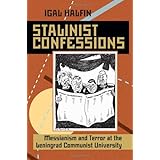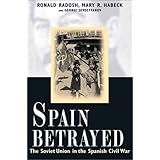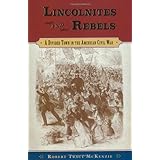
Average Reviews:

(More customer reviews)This work details how the Soviet totalitarian state labeled people "enemies" and dealt with them. One characteristic feature of this book is the reprinting of many relevant Soviet-era political cartoons, complete with translations of the Russian.
This work also emphasizes biographical details. For instance, Genrikh Iagoda (Yagoda) was head of the NKVD. In the late 1930's, Yagoda was successively succeeded by Nikolai Ezhov (Yezhov) and then by Lavrentii Beriia (Lavrenti Beria) as head of the NKVD. (e. g., p. 224).
Year-by-year statistics are provided for the indictments and executions during the Great Purge. (p. 399). According to the figures cited by Halfin, a total of 2,029,557 Soviet citizens were indicted and 688,647 executed.
It is possible that the NKVD, like the Nazis, included the use of poison gas in mass executions. On one hand, no Soviet document mentions use of poison gas. On the other hand, a number of NKVD officials testified of the use of trucks converted into mobile gas chambers, with the truck exhaust being routed into the compartment which held the prisoners. (p. 463).
Let us now consider some of the internal contradictions in Communist ideology which are alluded-to by Halfin:
The different manifestations of Soviet leftist radicalism were, in essence, not very different from each other. Halfin writes: "It was sometimes difficult to distinguish between a populist and a Social Democrat, a Bolshevik and a Menshevik, a Stalinist and a Trotskyist--after all, they professed the same revolutionary values, spoke the same Marxian language, adhered to the same emancipatory project." (p. 3). [These facts contradict modern leftists who try to dichotomize "Trotskyites" and "Stalinists", etc.].
Now who was the "revolutionary" and who was the "counterrevolutionary?" Halfin comments: "The carnivalesque logic of the Great Purge is evident in every field...As the purges progressed, the NKVD's snares captured huge numbers of its own investigators...20,000 NKVD employees were shot in 1936-1938...The higher one was in the Party hierarchy, the better were one's changes of being arrested." (p. 425).
Since time immemorial, Communists have labeled those who disagreed with them as fascists and Nazis. Interestingly, Soviet cartoons went as far as calling Trotsky a fascist and Nazi supporter. (p. 347).
It is also interesting to note that, for all the Communist rhetoric about the "working class", this was in actuality an ideological/propaganda construct. Halfin comments: "The Communist party was the party of the proletariat, but proletarian was a way of thinking, not a station in life to which one was born. Every individual who assumed the proletarian perspective could become a member of the Party (and, inversely, workers with bruises on their hands were barred entrance if their consciousness was not ripe)." (p. 372).
Click Here to see more reviews about:
Stalinist Confessions: Messianism and Terror at the Leningrad Communist University (Pitt Russian East European)During Stalin's Great Terror, accusations of treason struck fear in the hearts of Soviet citizens-and lengthy imprisonment or firing squads often followed. Many of the accused sealed their fates by agreeing to confessions after torture or interrogation by the NKVD. Some, however, gave up without a fight.
In Stalinist Confessions, Igal Halfin investigates the phenomenon of a mass surrender to the will of the state. He deciphers the skillfully rendered discourse through which Stalin defined his cult of personality and consolidated his power by building a grassroots base of support and instilling a collective psyche in every citizen. By rooting out evil (opposition) wherever it hid, good communists could realize purity, morality, and their place in the greatest society in history. Confessing to trumped-up charges, comrades made willing sacrifices to their belief in socialism and the necessity of finding and making examples of its enemies.
Halfin focuses his study on Leningrad Communist University as a microcosm of Soviet society. Here, eager students proved their loyalty to the new socialism by uncovering opposition within the University. Through their meetings and self-reports, students sought to become Stalin's New Man.
Using his exhaustive research in Soviet archives including NKVD records, party materials, student and instructor journals, letters, and newspapers, Halfin examines the transformation in the language of Stalinist socialism. From an initial attitude that dismissed dissent as an error in judgment and redeemable through contrition to a doctrine where members of the opposition became innately wicked and their reform impossible, Stalin's socialism now defined loyalty in strictly black and white terms. Collusion or allegiance (real or contrived, now or in the past) with "enemies of the people" (Trotsky, Zinoviev, Bukharin, Germans, capitalists) was unforgivable. The party now took to the task of purging itself with ever-increasing zeal.

Click here for more information about Stalinist Confessions: Messianism and Terror at the Leningrad Communist University (Pitt Russian East European)























